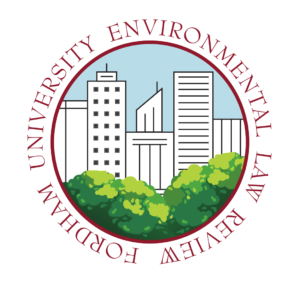Rising Energy Costs in New York
Liz Ralston
ELR Staffer FLS ‘26
Energy bills in New York keep rising. Utility debt has skyrocketed from 782 million in 2020 to 1.8 billion in December 2024. One in four New York residents pay more than 6% of their annual income on electricity and natural gas. In the winter of 2025, National Grid saw additional rate hikes approved, while Con Edison had a rate hike proposal pending to raise the cost by 11.4%.
Public utilities negotiate price increases through administrative trials called “rate cases,” where interested parties can support or contest the proposed rate increase. While the cost that the utility pays for the energy itself is required by law to be passed along to the consumer, the “delivery” cost is malleable and highly litigated. Con Edison’s current rate case proposes an 18% increase in delivery costs. Of that increase, 4.9% is dedicated to property taxes, while infrastructure investment costs make up the second largest portion of the increase at 4.2%. Increasing returns to investors also make up a substantial part of the pie: 3.1%. (ConEd argues that the return on investment for energy investors is the lowest in the country, and increasing this number will improve the health of the company).
Some have blamed the energy affordability crisis in New York on the state’s transition to green energy. In 2019, New York lawmakers passed the Climate Leadership and Community Protection Act, which required the state to cut its carbon footprint by 85% below 1990 measures by 2050. This Act was one of the most ambitious of its kind in the world. Many, seeing their energy prices rise, have wondered if they are feeling the pain of a transition to green energy.
The answer is far more complicated. Although the increased use of electricity has put pressure on the grid, much of the infrastructure cost built into the proposed rate increase will go towards maintaining existing fossil fuel infrastructure. For example, ConEd is seeking approval for $65 million in upgrades to its Queens liquid natural gas facility. Although the state banned new LNG facilities decades ago after a Staten Island LNG plant disaster that resulted in 40 deaths, ConEd and National Grid still run LNG facilities in New York City.
While upstate New York receives most of its energy from hydroelectric and nuclear energy, sustainable energy does not make it downstate because of insufficient transmission. As a result, NYC and Long Island get three-quarters of their power from fossil fuel plants, with the densest concentration in Queens. Three-quarters of New York City’s energy still comes from fossil fuels.
ConEd has additionally pointed the finger at New York’s unique property tax system for driving up prices. In New York City, utilities pay a special franchise tax on pipes and wires that cross through public land. As a result, Con Edison is the single largest property tax payer in New York state. Taxes have risen in the past several decades, making up the largest portion of the rising cost of energy. One solution to the complex reasons behind rising energy costs is the proposed NY HEAT Act (S2016/A4592), which would seek to restrict utility costs by stopping the expansion of gas heating in homes. Under the current New York law, gas utilities are required to provide free gas hookups to new customers within 100 feet of an existing gas line – the “100-foot rule.” The cost of providing gas lines to new customers is spread across all customers, driving up energy bills. The NY HEAT ACT would remove this obligation and encourage, and by doing so, end the expansion of natural gas heating and reduce the costs being passed along to consumers. Additionally, the act would require energy costs to be capped at 6% of the annual income of consumers. The Act could have substantial impacts on reducing energy costs, but in the short term, it is possible that energy prices will continue to rise.

